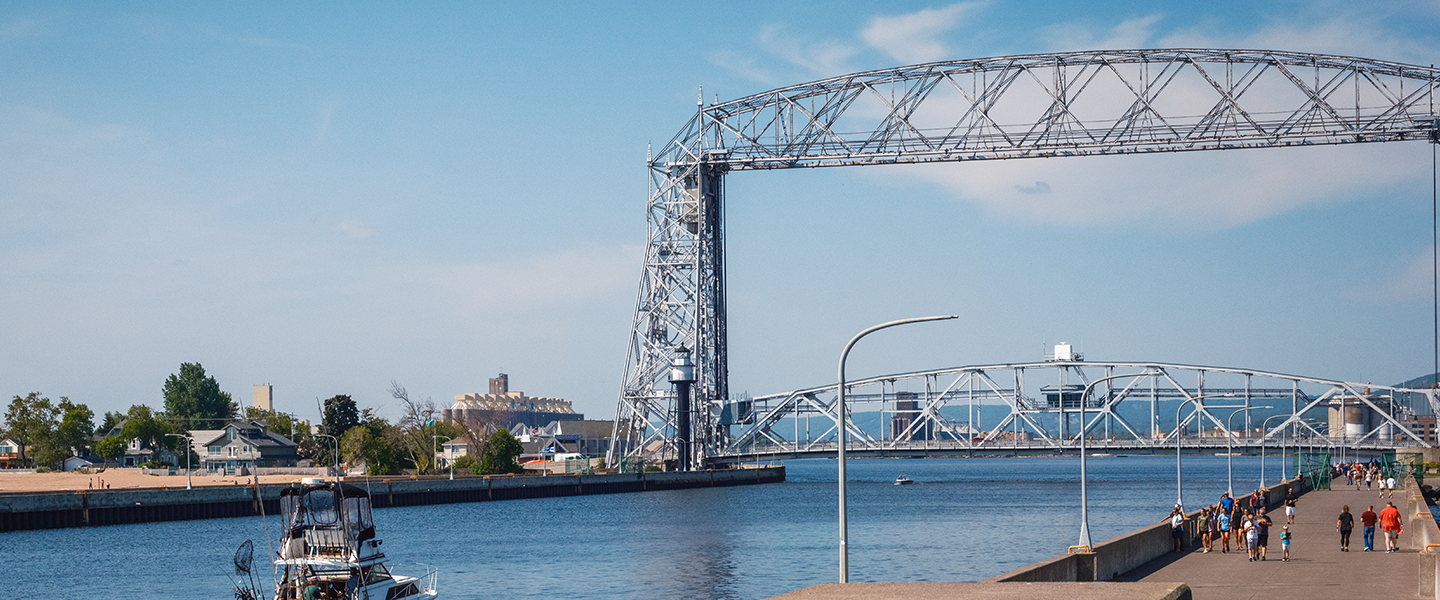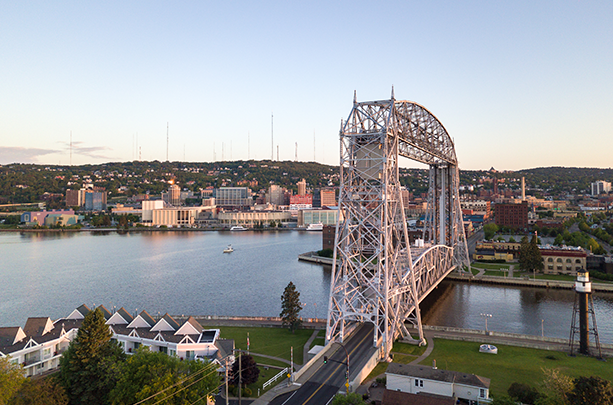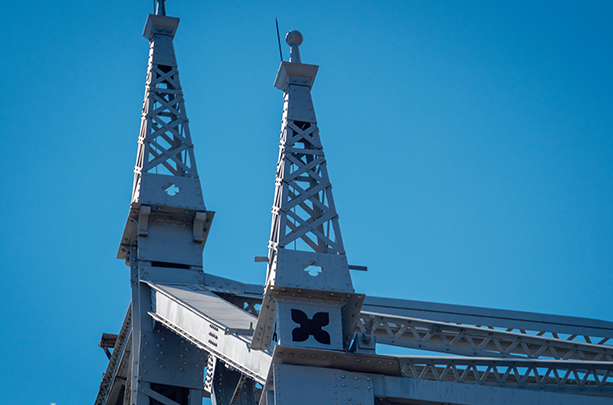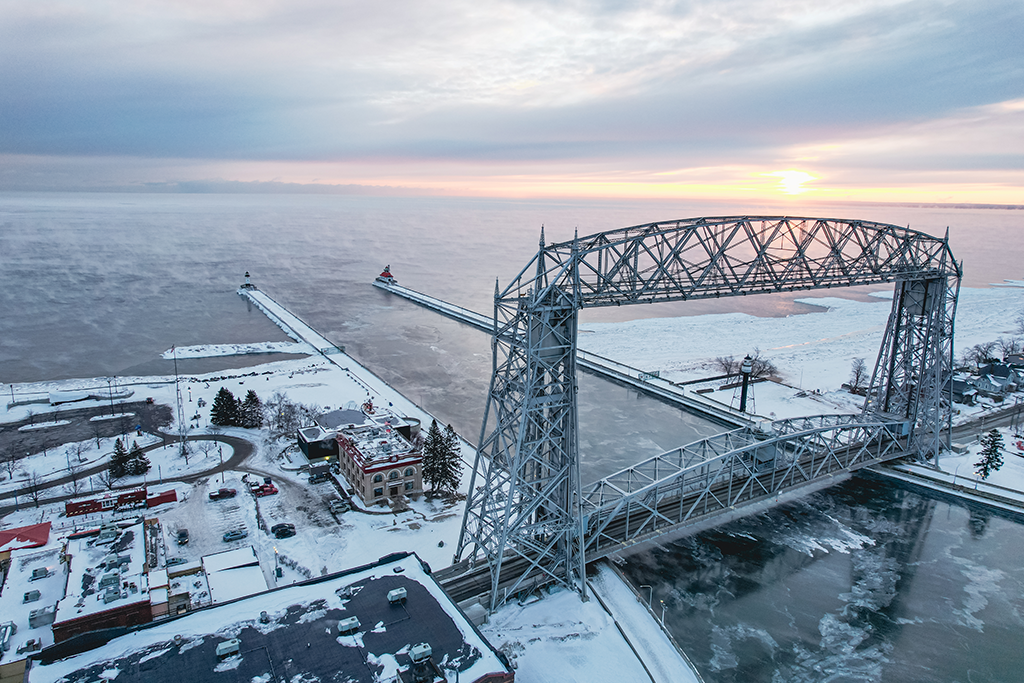
Aerial Lift Bridge
A lake-superior-sized duluth landmark
As far as Duluth landmarks go, only Lake Superior looms larger than the Aerial Lift Bridge. At 138 feet tall and 390 feet wide, the steel bridge spans the Duluth Shipping Canal, connecting the sandbar of Park Point with the rest of Duluth. It also has one remarkable feature – a suspension system that raises the bridge to a height of 135 feet and allows ships to pass underneath.
The lift bridge is an iconic Duluth landmark – and the story of its making is the very story of Duluth’s rise (pun intended) as one of the Midwest’s most prominent cities.



A Brief Shipping Log of lift bridge history
1870: The Lake Superior & Mississippi Railroad runs daily freight and passenger trains between St. Paul and Duluth. The freight industry, fueled by shipping commerce on Lake Superior, turns Duluth into an industrial hub.
1870: The steam-powered dredging barge, Ishpeming, begins cutting the Duluth Ship Canal through the swampy gravel of Minnesota Point.
1871: The first cut was completed, connecting St. Louis Bay with Lake Superior but separating Minnesota Point from the rest of Duluth. For residents on the point, their home essentially became an island. In the decades that follow, they access the rest of Duluth via ferry or temporary wooden bridge, lobbying each year for a permanent bridge to be built.
1896: US Congress appropriates $3 million “to make Duluth-Superior harbor the most modern in America.” The project widens the canal and leads to the construction of two concrete piers, South Pier and North Pier.
1899: Inspired by a revolutionary aerial transfer bridge in France, Duluth City Engineer Thomas McGilvray begins drafting plans for a bridge to span Duluth Ship Canal.
1900: Duluth establishes the Canal Bridge Commission. With help from the city attorney, the group gains the proper approvals to build the bridge and eventually awards a contract to Modern Structural Steel.
1905: At 4:30 PM on February 23, 1905, two hundred people witness the ferry car’s first crossing. McGilvray himself controlled the car, which glided across the canal without incident. The trip lasted one minute and fifteen seconds. The bridge begins regular service in March of that year.
1905: On April 8 – the first weekend day the bridge was open to the public – 32,595 people board the car in a 12-hour span.
1909: Construction begins on the North Pier Light. At 37-feet-tall, its electric lamp can be seen eleven miles away. 1973: The bridge was added to the National Register of Historic Places.


